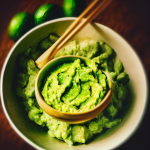 LHS Episode #488: M17 Deep Dive 2
LHS Episode #488: M17 Deep Dive 2
Hello and welcome to the 488th edition of Linux in the Ham Shack. In this episode, the hosts interview Ed, N2XDD, and Steve, KC1AWV, of the M17 project. We last had them on the show in March of 2021. Today, we discuss the M17 project, what's new, what's old and what's happening. Thank you for tuning in and we hope you have a great week.
73 de The LHS Crew
Russ Woodman, K5TUX, co-hosts the Linux in the Ham Shack podcast which is available for download in both MP3 and OGG audio format. Contact him at [email protected].
 ICQ Podcast Episode 389 – UK Hamfest Part 2
ICQ Podcast Episode 389 – UK Hamfest Part 2
In this episode, we join Martin Butler M1MRB, Dan Romanchik KB6NU, Caryn Eve Murray KD2GUT, Edmund Spicer M0MNG and Ed Durrant DD5LP to discuss the latest Amateur / Ham Radio news. Colin Butler (M6BOY) rounds up the news in brief and in the episode's feature is Part two of our Hamfest Round-up
We would like to thank our monthly and annual subscription donors for keeping the podcast advert free. To donate, please visit - http://www.icqpodcast.com/donate
- Amateur Radio Club Members Assist Law Enforcement
- RSGB Construction Competition
- Ham Radio’s News Information Channels Shrink By Two
- Got a Problem? Ask a Ham!
- If China declares war, These Ham Radio Enthusiasts Could be Crucial
- RSGB AGM 2023
- RSGB Morse Test Coordinator Appointed
- FoxTelem Version 1.12 Released
Colin Butler, M6BOY, is the host of the ICQ Podcast, a weekly radio show about Amateur Radio. Contact him at [email protected].
 Time to make a choke balun
Time to make a choke balun
In your ham radio adventures, you may have heard the words..choke balun, feedline isolation, common mode choke or a 1:1 balun. In my humble opinion different names for the same device. These devices for the most part are present in a system to control common mode currents. I am not an engineer just a simple ham guy trying to sometimes understand some very complicated and technical explanations.
I hope to keep the next bunch of lines understandable. Here we go...what are common mode currents! Most ham use some form of 52 ohm coax as it's very easy to route, secure and can within reason be placed anywhere. Ideally, RF will flow out on the OUTER SURFACE of the coax INNER CONDUCTOR and flow back on the INSIDE SURFACE of the coax shield. This is what happens in a perfect world but if a system is unbalanced RF current will return on the OUTSIDE of the outer coax braid. It does not return but it radiates.
This is when we hams can experience RFI issues and these issues vary with the amount of common mode currents flowing on the outside of the shield of the coax. How does one control this common mode current? One very effective way is to introduce a common mode choke, 1:1 balun, choke, feed line isolation or whatever else it could be called.
In a previous post, I did go over how I installed a 1:1 balun at the antenna feed point of my Hustler 4BTV and that seemed to satisfy my RFI issues but further reading informed me that a choke balun at the radio feed point would be very advantageous. I ordered 2 FT240-31 mix toroids as I decided to make a choke balun instead of buying one. The two common mixes for HF toroids are 31 and 43. The difference being the 31 mix is effective from 1-300 Mhz and 43 is effective from 25-300 Mhz. I chose to go with the 31 mix and purchased 2 from a reputable dealer as not all toroids are created equal. I would be very wary if you find toroids at a very low price....just remember you get what you pay for. I ordered mine from Mouser Electronics Canada, part number 623-2631803802 made by Fair-Rite for 13.00 each.
I used RG8X coax to wind around the toroid but the issue with using a ring toroid compared to a split bead is I had to remove the PL-259 to wind the coax around the toroid and then solder the PL-259 back on. I intended to make 10 loops and for some reason, I ended up with 11 turns through the toroid. I then soldered the PL-259 connector back on but not before placing the barrel and coax spacer on....how many of us have soldered a PL-259 on and then realized we forgot the spacer and barrel!
Another advantage to having a choke balun at each end of the coax is that it helps remove some RF noise that is picked up on the shield of the coax.
 |
| Dont forget these BEFORE soldering the PL-259 |
Mike Weir, VE9KK, is a regular contributor to AmateurRadio.com and writes from New Brunswick, Canada. Contact him at [email protected].
 Amateur Radio Weekly – Issue 260
Amateur Radio Weekly – Issue 260
Richard Brunton, G4TUT, Silent Key
For countless years, Richard was editor of the popular Southgate Amateur Radio News website.
RSGB
Why I Quit QRP (and maybe shouldn’t have)
I placed the blame for my lack of portable QRP QSOs on poor propagation. In hindsight, there could have been another explanation.
Ham Radio Outside the Box
AMSAT Amateur Satellite Database
Radio frequencies for Amateur satellites orbiting Earth. Search and sort them by name, number and mode.
AMSAT
Build a passive radar with Software-Defined Radio
Spot stuff with the KrakenSDR and two TV antennas.
IEEE Spectrum
Drone to raise antenna using bait drop servo
This approach seems promising and I hope to try it out with a real antenna raising soon.
Marxys Musing On Technology
Making QO-100 contacts from North America–a new challenge
It is understandable that Amateur Radio operators in North America are disappointed that they cannot experience the fun of using QO-100.
AMSAT UK
Identify that antenna by sight
It’s a skill that Radio Amateurs pick up over years but which it sometimes comes as a surprise to find that is not shared by everyone.
Hack A Day
Radio silence grows in Venezuela as government shutters dozens of stations
At least 50 stations in Venezuela have been closed so far this year by the Conatel regulator because it says they lack valid licenses.
Reuters
Baluns and common-mode impedance: How much is enough?
This article starts by defining what a balun is (and is not) along with common-mode current and impedance.
On All Bands
Exploring the handy Prusik Knot
The Prusik knot is a simple, yet effective means to provide needed strain relief to wire antennas and coax.
QRPer
POTAXXIA may be right for you
Pursue your passion while remaining in control.
K0NR
Video
GNU Radio Conference 2022 talks
YouTube playlist of all talks from the 2022 GNU Radio Conference.
YouTube
Creating homemade tubes
Building a 1920s tube amplifier (and tubes!)
YouTube
Get Amateur Radio Weekly in your inbox.
Sign-up here
Amateur Radio Weekly is curated by Cale Mooth K4HCK. Sign up free to receive ham radio's most relevant news, projects, technology and events by e-mail each week at http://www.hamweekly.com.
 LHS Episode #487: The Weekender XCVIII
LHS Episode #487: The Weekender XCVIII
It's time once again for The Weekender. This is our departure into the world of hedonism, random topic excursions, whimsy and (hopefully) knowledge. Thanks for listening and, if you happen to get a chance, feel free to call us or e-mail and send us some feedback. Tell us how we're doing. We'd love to hear from you.
73 de The LHS Crew
Russ Woodman, K5TUX, co-hosts the Linux in the Ham Shack podcast which is available for download in both MP3 and OGG audio format. Contact him at [email protected].
 POTAXXIA May Be Right For You
POTAXXIA May Be Right For You
Help Is Available
The post POTAXXIA May Be Right For You appeared first on The KØNR Radio Site.
Bob Witte, KØNR, is a regular contributor to AmateurRadio.com and writes from Colorado, USA. Contact him at [email protected].
 LHS Episode #486: Holy Guacamole
LHS Episode #486: Holy Guacamole
Hello and welcome to Episode 486 of Linux in the Ham Shack. In this short-topics episode, the hosts discuss sweepstakes contesting, Youths on the Air, ham radio as a game (?), GUAC, a very old sqlite vulnerability that persists today, holes in OpenSSL, the latest version of Ubuntu and much more. Thanks for listening and have a great week.
73 de The LHS Crew
Russ Woodman, K5TUX, co-hosts the Linux in the Ham Shack podcast which is available for download in both MP3 and OGG audio format. Contact him at [email protected].





















